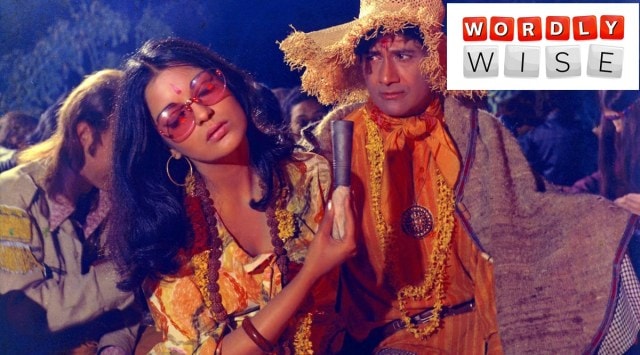Flower children of the Swinging Sixties: A maverick generation that inspired a new lexicon
You have heard of baby boomers and hippies. Do you know who they were and how they got these names?
 Zeenat Aman played a troubled flower child in the 1971 hit Hare Rama Hare Krishna. (Photo: YouTube/screengrab)
Zeenat Aman played a troubled flower child in the 1971 hit Hare Rama Hare Krishna. (Photo: YouTube/screengrab) The last edition of Eye, The Sunday Express magazine, carried a cover on actor Zeenat Aman, who, back from the cold, is stealing some limelight. The profile chronicles her film world journey – from coming into popular consciousness playing a troubled flower child in the 1971 hit Hare Rama Hare Krishna to becoming a top star during the decade, essaying some of the most remembered unconventional roles, to calling it a day before staging a comeback, this time on social media.
The article set me on a search for the etymology of the expression ‘flower child’, which, in turn, led me to the ‘Swinging Sixties’ — the decade that announced confidently it was shaking off the past was unique in many ways. The space exploration, the advent of the computer, the coming of age of the baby boomers, their disdain for the established social norms, as reflected in art, music, sartorial preferences and a permissive lifestyle, all contributed to a kind of lexical novelty that will define and outlive generations. Here’s a story about a flower child.
The March on the Pentagon on October 21, 1967 in the US capital was one of the many protests that the country had been witnessing against its involvement in the war in Vietnam. What distinguished this one was that it was the first with a clear purpose: the 100,000 young protesters, blocked by 2,500 rifle-wielding soldiers, were determined to end the war effort. Covering the rally was the celebrated French photojournalist Marc Riboud, whose picture of a lone girl holding a flower inches away from the bayonets would become one of the most enduring images of her generation. Jan Rose Kasmir, the girl with the flower, was all of 17 then.
 Jan Rose Kasmir, the girl with the flower. (Photo: Wikimedia Commons)
Jan Rose Kasmir, the girl with the flower. (Photo: Wikimedia Commons)
The term ‘flower children’ refers to young people in the 1960s and the 1970s who not only stood against war and advocated peace and love, but also rejected the mores of conventional society, especially regarding dress, personal appearance and consumption of marijuana and LSD. These young people earned another epithet, hippie, a relic from the previous decade. A hippie was a member of a counterculture, originally on the west coast of the US but later spreading through the youth of the Western world. It spawned a range of coinages like hippiedom and hippieness. In current usage, these are used as patronising terms for casualness and unconventionality of appearance or behaviour in the young.
These can be further traced back to US slang words hip and hep, both referring to someone who is well informed and knowledgeable. The 1930s saw hep-cat, who was a devotee of jazz, implying someone up-to-date or stylish.
Hipster became part of the lexicon in the early 1940s to refer to someone who was hip or in touch with fashionable tastes.
And more recently, the 1980s saw the alliterative use of hip-hop to denote a youth subculture originating amongst the black and Hispanic population of New York City, which comprised elements like rap music, graffiti art and break dance as well as distinctive codes of dress and speech.
By the way, the baby boomers were the result of the baby boom in the immediate post-war years when a large number of soldiers back from the warfront settled down to a family life. Many of them would grow up during the next couple of decades to become flower children.
Wordly Wise is a weekly column by Amitabh Ranjan published every Saturday in the Explained section. Please tweet your feedback to @ieexplained
- 01
- 02
- 03
- 04
- 05






































